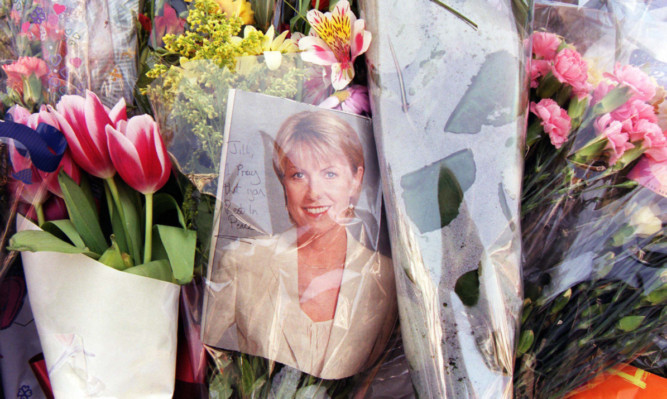
on July 2, 2001, Barry George was given a life sentence for the murder of the TV presenter.
Seven years later, after several appeals and a retrial, he was found innocent.
It was a killing that had shocked Britain because it seemed so utterly senseless. Why would anyone want to kill the country’s favourite TV presenter?
The method added to the puzzle shot in the head execution-style on the doorstep of her home in Fulham, West London.
One theory was that someone convicted as a result of a Crimewatch episode she’d presented had hired an assassin in revenge.
Later, it was suggested the Serbian warlord Arkan may have ordered her execution in retaliation for a NATO airstrike on Serbian TV headquarters that killed several presenters.
In one of the Met’s biggest-ever murder cases, called Operation Oxborough, a squad of 45 officers interviewed 5,000 people.
After a year of little progress, they’d discounted the revenge theories.
That seemed to leave the police with only one possible explanation that it was the act of a lone madman.
Preferably one who lived close to the scene of the crime, was obsessed with guns and celebrities and had form for violence against women Barry George had seemed to fit the bill.
Psychologists said he was suffering from anti-social, histrionic, narcissistic and possibly paranoid disorders.
He was said to be a Walter Mitty-type character because of his desire to impersonate famous figures.
At school, he had called himself Paul Gadd, Gary Glitter’s real name.
Later, he styled himself Barry Bulsara after Queen singer Freddie Mercury’s real name.
George’s only job had been a four-month spell at BBC Television Centre as a messenger in 1977, which sparked an enduring interest with the organisation.
He continued to read Ariel, the in-house magazine, and reportedly kept four copies of the memorial edition after Dando’s murder.
The trial lasted eight weeks and, after 32 hours of deliberation, the jury delivered a majority guilty verdict.
That hesitation spoke volumes about a conviction many felt to be unsafe from the start.
Much of the evidence used against George, who maintained his innocence throughout, was circumstantial.
There was no motive, murder weapon or eyewitnesses. The closest they had to one was someone who said they saw him in Jill Dando’s street four and a half hours before the murder.
A single fibre similar to his trousers was found at the crime scene and it was later argued the presence of armed officers at his arrest could explain the single particle of gunshot residue found in his coat pocket.
After two unsuccessful appeals, a third saw the discredited forensics evidence excluded and George’s conviction was quashed in 2007.
After a retrial, he was found not guilty and set free on August 1, 2008.
Following his acquittal, several newspapers ran stories making various accusations and he won substantial damages for libel.
However, George’s claim for £1.4m for wrongful imprisonment was turned down on the grounds that “there was indeed a case in which a jury, properly directed, could have convicted the claimant of murder”.
As matters stand, though, we’ll probably never know who did indeed kill Jill Dando.

Enjoy the convenience of having The Sunday Post delivered as a digital ePaper straight to your smartphone, tablet or computer.
Subscribe for only £5.49 a month and enjoy all the benefits of the printed paper as a digital replica.
Subscribe